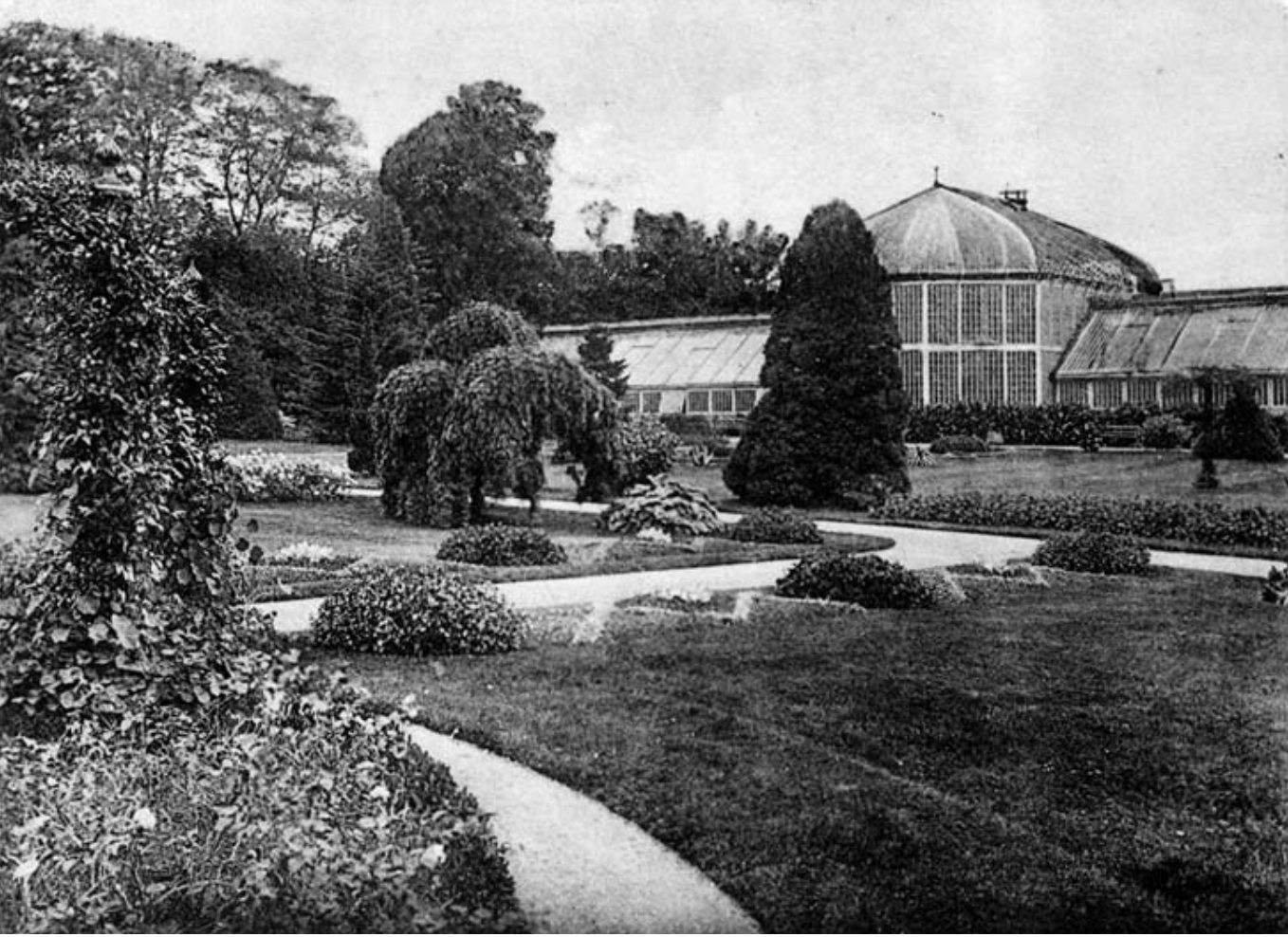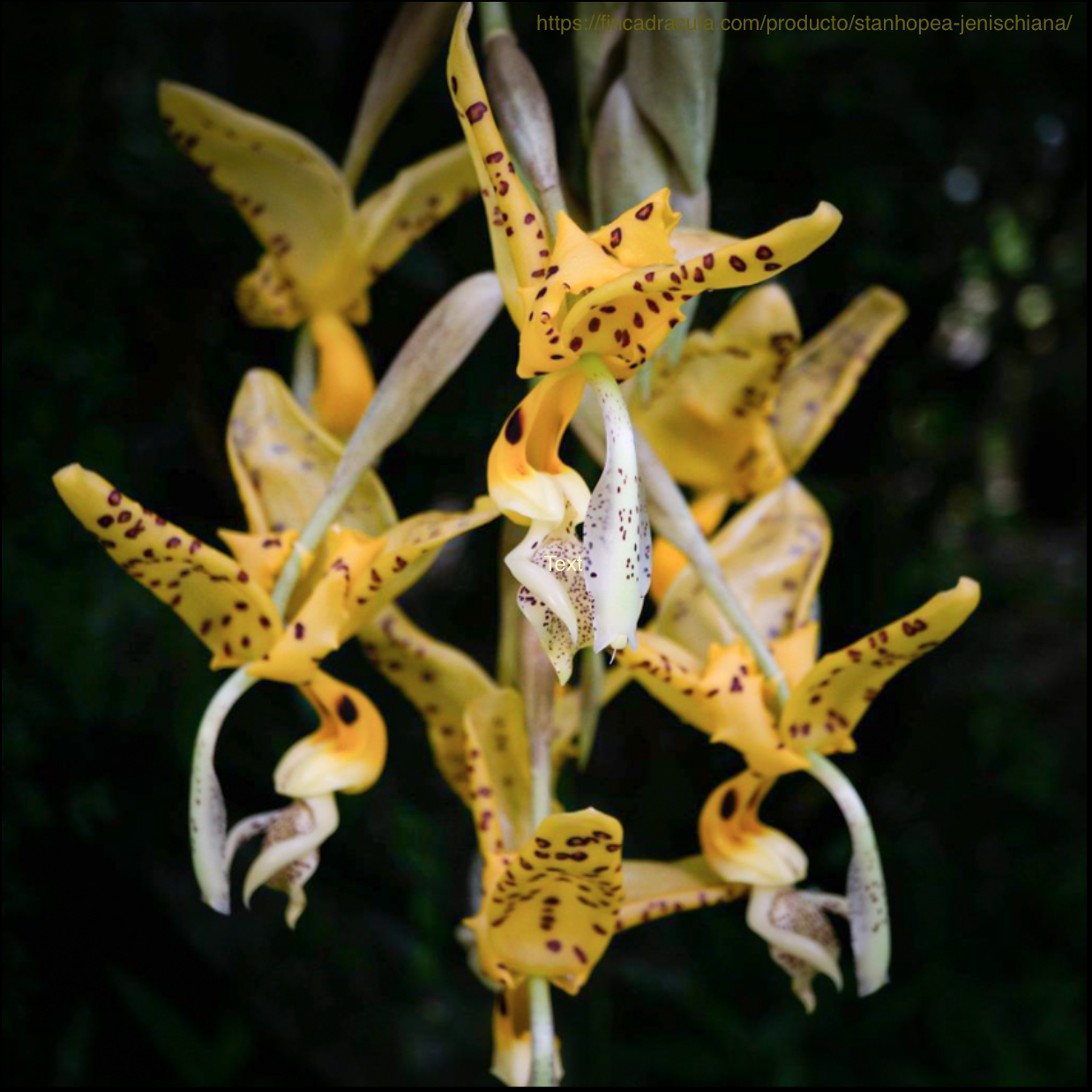My love for nature has been lifelong. But it wasn’t until my first visit to Southern California that I encountered a botanical garden of such grand scale and diversity as the Huntington Gardens in San Marino, Pasadena.
Spanning 207 acres, the meticulously cultivated gardens at Huntington reveal a breathtaking array of plant life – from arid desert succulents to delicate orchids – that I had never experienced before. This extraordinary place has since become a recurring source of astonishment and inspiration for me, deepening my connection not only to all wondrous shapes and forms of nature but also to its creative and restorative powers.
One of their brand-new projects, thus, events, titled Orchidées, which was being advertised in one of the Huntington Gardens’ newsletters, caught my immediate attention. Its elegant French title resonates naturally with my love of the French language and culture, as you may be aware of from from of the songs I perform. But also because it showcases an innovative blend of science and art.
🪴 Orchids in Motion: Science Meets Artistic Expression
Orchidées is a world premiere musical composition scheduled for October 2025 at The Huntington’s renowned Orchid Show in California. Conceived by the Irish composer Nick Roth in close collaboration with botanist Barbara Gravendeel and her team at Naturalis Biodiversity Center in Leiden, Netherlands, this work translates the very DNA sequences of orchids into a five-movement cello composition.
Each of these sections or movements represents a different orchid subfamily, rendered through the intricacies of genetic coding transformed into musical motifs. The performance is accompanied by mesmerising time-lapse films capturing orchids blooming in real time, creating a profound sensory dialogue between sight and sound.
🪴 Orchid’s Darker Roots
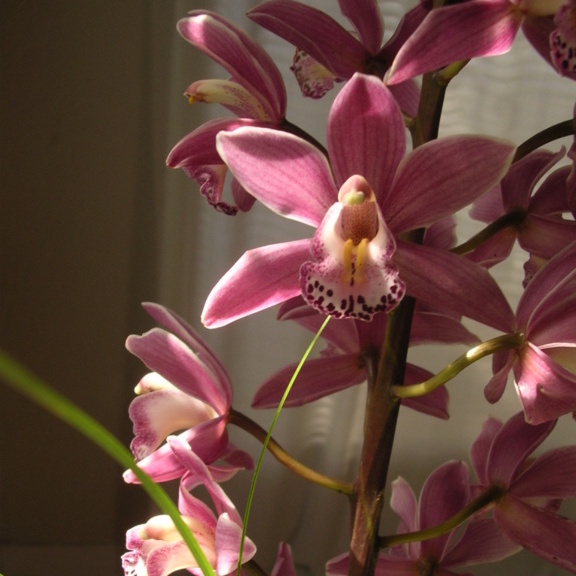 This unique musical project stands as a beautiful homage to these flowers’ enduring power to inspire. It emphasises the grandeur of historic collections on the forefront of scientific exploration, underscoring their place as emblematic messengers of biodiversity and cultural heritage. It is, thereby, impossible to separate the story of these elegant wonders from a darker reality.
This unique musical project stands as a beautiful homage to these flowers’ enduring power to inspire. It emphasises the grandeur of historic collections on the forefront of scientific exploration, underscoring their place as emblematic messengers of biodiversity and cultural heritage. It is, thereby, impossible to separate the story of these elegant wonders from a darker reality.
The oldest known reference to orchids was made almost 3000 years B.C.E. ago. But it wasn’t until the late 18th century that these flowers were discovered for a highly lucrative European market. The mid-to late 19th century triggered a down-right orchidelerium, thus evoking a period of great drama regarding the pursuit of ever-new and exotic orchids.
So-called plant hunters resorted to exploiting indigenous knowledge and even damaging wild habitats in their search for rare blooms. This sometimes ugly history of beautiful things is a complicated story. But orchids still manage to spark an extraordinary exchange between people and cultures that goes far beyond plants themselves. It’s one that spans centuries and continents, inspiring collectors, musicians, and artists alike, shaping not only scientific study but also the history of places and architectures, like the one I’m about to tell you about…”
🪴 My Orchid Home: The Rich Heritage of the Jenisch Haus
What better place than the Jenisch Haus in Hamburg to leave my “prized” orchids, I thought, the last time I went on travels during the winter months.
Why there? You may ask…
 Well, for starters, I have got a special relationship with the Jenisch Haus where I work as a tour guide whenever I am in Hamburg. It’s not really a Haus but is an incredibly picturesque 19th century villa that crowns its lush surroundings, the romantic Jenisch Park, like a jewel. It has been open to the general public as a museum since the 1950s and often serves as a backdrop for elaborate wedding photos, prestigious gatherings and intimate classical concerts. So orchids fit right into the picture.
Well, for starters, I have got a special relationship with the Jenisch Haus where I work as a tour guide whenever I am in Hamburg. It’s not really a Haus but is an incredibly picturesque 19th century villa that crowns its lush surroundings, the romantic Jenisch Park, like a jewel. It has been open to the general public as a museum since the 1950s and often serves as a backdrop for elaborate wedding photos, prestigious gatherings and intimate classical concerts. So orchids fit right into the picture.
The enchanting surroundings elevate the whole image. It was designed in the 1830s as an undulating and lush English landscape park with a recently established nature reserve, a historic pleasure garden and an arboretum with the oldest still living Gingko tree in Hamburg.
My affinity for this setting is no coincidence. As someone shaped by the Suffolk countryside, I am drawn to it with an almost instinctive familiarity, as though the landscape resonates with an inner topography inherited from place and upbringing.
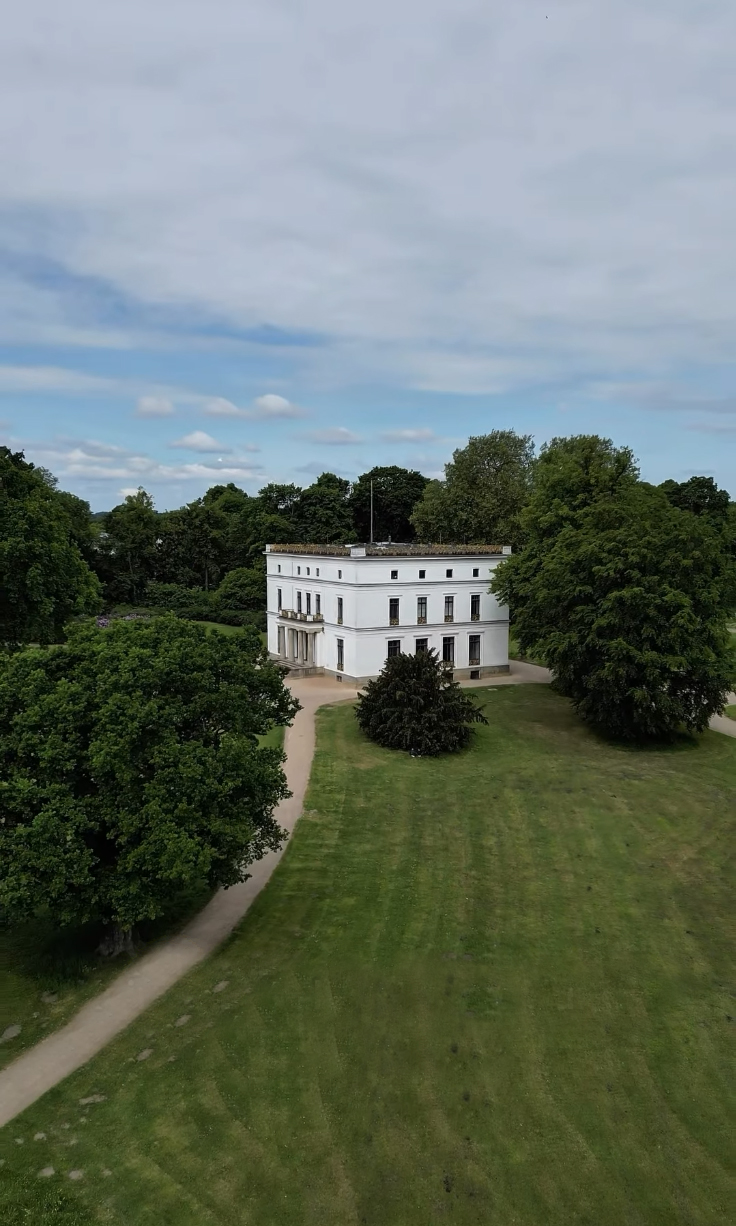 Constructed between 1831 and 1834, the neoclassical villa stands as one of Hamburg’s most iconic and architecturally significant landmarks. It involves the designs of two prominent architects, Gustav Forsmann (1795–1878) and the famous Prussian design genius, Karl Friedrich Schinkel (1781–1841). It served its owners, Martin Johann Jenisch (1793–1857) and his wife, Fanny Henriette (1801–1880), as a luxurious summer residence. Both came from considerable wealth, which enabled them to acquire the former estate of the prominent overseas merchant Baron Caspar Voght at Klein Flottbek. Moreover, they transformed it into a prestigious garden and scientific horticultural site.
Constructed between 1831 and 1834, the neoclassical villa stands as one of Hamburg’s most iconic and architecturally significant landmarks. It involves the designs of two prominent architects, Gustav Forsmann (1795–1878) and the famous Prussian design genius, Karl Friedrich Schinkel (1781–1841). It served its owners, Martin Johann Jenisch (1793–1857) and his wife, Fanny Henriette (1801–1880), as a luxurious summer residence. Both came from considerable wealth, which enabled them to acquire the former estate of the prominent overseas merchant Baron Caspar Voght at Klein Flottbek. Moreover, they transformed it into a prestigious garden and scientific horticultural site.
Particularly through Jenisch’s extensive collections of paintings, sculpture, tropical trees and orchids, he significantly shaped the cultural and botanical heritage of Hamburg.
At the turn of the 19th century, nature was philosophically and aesthetically a strong focus of the upper class as a source of inspiration. This is also reflected in many architectural elements of the villa: The inlays of the parquet flooring in the ladies’ drawing room, the spacious and representative design of the vestibule and the garden salon, with a majestic view of the river Elbe. In both material and layout, these were refined and elegant social spaces that connected interior life with nature, embodying key neoclassical ideals such as symmetry, order, and harmony. Its prototypes stemmed strictly from the architectural remains of classical antiquity, such as temples and villas.
The overall positive reception and popularity of these sites directly motivated the so-called Grand Tour of Italy. Especially for the British elite and Northern Europeans, the Grand Tour became a rite of passage for aristocratic young men, who travelled to Italy in the 18th century, to study and experience the ancient ruins. Key stops included Rome, Florence, Venice, Naples, and archaeological sites like Pompeii and Herculaneum. These wealthy travellers often commissioned artworks or acquired antiquities for their homes, like Jenisch did on three extensive tours to Italy, while his villa was being built.
🪴 Jenisch’s Collections: Artworks, Trees and Orchids
This is how, over the years, the Hamburg senator Jenisch was able to assemble a distinguished collection of artworks. He was a passionate and influential collector, with a focus on German painters active in Italy during the 19th century. Among them notable German painters such as Johann Friedrich Overbeck, a leading figure of the Nazarene movement, who revived early Renaissance styles with religious themes, and aligned with the intellectual and cultural values of the time. Jenisch’s passion for collecting extended to the creation of a carefully curated arboretum within his estate’s pleasure grounds, showcasing rare and exotic trees that embodied the period’s enthusiasm for discovery and botanical exploration and study.
Jenisch was especially renowned, however, for his orchid collection that comprised over 1,000 species from more than 144 genera, including rare specimens from Africa, Asia, and the Americas. It was considered one of the foremost in Europe during the 19th century. His catalogue was exhibited at prestigious garden shows, placing it among the foremost collections that rivalled those of London’s horticultural elite. It attracted many visitors and dignitaries, including King Christian VIII of Denmark, illustrating its international esteem.
🪴 Greenhouses: Cultivating Rarity and Beauty
Essential for compiling Jenisch’s vast collection was his head gardener Friedrich Berthold Kramer. Before joining Jenisch in 1833, he had worked as a gardener at the Hamburg Botanical Gardens (known today as the Old Botanical Garden), originally established in 1821 on the site of the former city fortifications and now part of Planten und Bloomen. Kramer was known for his horticultural skills and international contacts: He imported plants directly from overseas, maintained relationships with British and Hamburg nurseries, and exchanged specimens with leading botanists, such as Heinrich Gustav Reichenbach. He thereby contributed significantly to the scientific reputation of Jenisch’s collections.
Kramer moved into a house on the estate grounds, now the site of the Bargheer Museum. Under his supervision, several new greenhouses were constructed to house Jenisch’s growing refined collection of tropical and rare plants to provide the necessary controlled environments for these delicate flowers and plants. A picturesque photograph of the structure, including a part of the gardens, was even sold as a postcard in 1908.
It was the English gardener and architect Joseph Paxton (1803–1865), who pioneered the use of separate glasshouse conditions to suit the climatic needs of the different orchid species. He had realized that to simulate the orchids’ natural habitat, light and air movement was essential. Paxton, an accomplished architect also designed the famed Crystal Palace in Hyde Park, London, for the Great Exhibition of 1851. [History of Orchids p. 12]
Throughout Europe, greenhouses symbolised technological progress and status, offering ideal growing conditions for prized plants – even during cold and wet Northern winters. But they were also costly status projects. Contemporary records suggest that due to specialised glass, ironwork, and heating installations, elaborate greenhouses could cost more per square meter than residential buildings. Albeit having been built at a considerable expense, Jenisch’s greenhouses were torn down and replaced in the 1950s.
🪴 What’s your Name? Orchids and the Linnaean System
Beginning in the 18th century, orchids became an obsession among many European collectors and merchants. Most of these specimens from this diverse and rapidly expanding botanical world entering collections from territories in Asia, Africa, and the Americas remained unclassified. Common names proved too ambiguous. They varied widely by region and language, and could refer to multiple different species.
T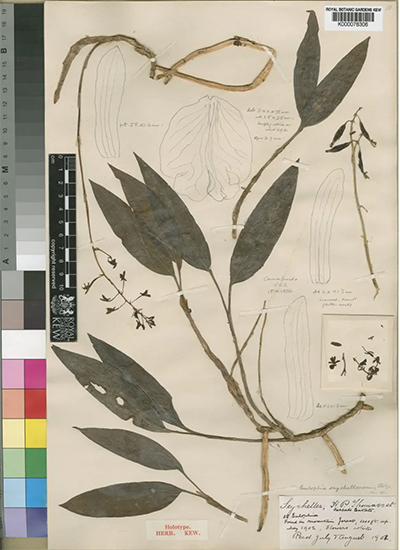 o assign unique, universal, and stable scientific names to individual plants, the Swedish botanist Carl von Linné (Linnaeus) developed a binomial nomenclature system. This system is composed of two parts: the genus and species. The first name, the genus, groups related species. The second part is the species epithet, identifying the individual species within that genus. It still constitutes the foundation of modern botanical classification, allowing scientists worldwide to clearly and precisely identify plants without confusion from varying local or common names.
o assign unique, universal, and stable scientific names to individual plants, the Swedish botanist Carl von Linné (Linnaeus) developed a binomial nomenclature system. This system is composed of two parts: the genus and species. The first name, the genus, groups related species. The second part is the species epithet, identifying the individual species within that genus. It still constitutes the foundation of modern botanical classification, allowing scientists worldwide to clearly and precisely identify plants without confusion from varying local or common names.
This image (© RBG Kew) stems from the herbarium of the Royal Botanical Gardens, Kew, which was in 2024 fully digitalised) shows the Oeceoclades seychellarum, which was named for example, after the island on which is was initially found. The Seychelles Orchid, also tells a poignant story of loss and the fragility of island ecosystems. Once deemed rare, this orchid is now sadly extinct.
Linné’s taxonomy was embedded in Enlightenment ideals of rationality and order, but also in the complex colonial and commercial networks through which novel plants reached European horticulture. Many orchid names honour European explorers, scientists, collectors, or patrons, like the sought-after orchid Stanhopea, named after the Earl of Stanhope, known for his wide-ranging contributions to science and engineering. But in retrospect, many of these designated names were problematic. Ethical concerns about colonial exploitation of people and land were generally ignored. Instead, colonialism was used as a means or instrument to advance scientific research and imperial expansion.
🪴 Rarely Adopted Indigenous Names
Indigenous names for orchids were rarely adopted in formal scientific naming for several reasons linked to historical, cultural, and scientific practices of the 18th and 19th centuries. The scientific taxonomy system favoured these universal, standardised Latin names over their original, local vernacular names, which, like in Europe, varied widely among indigenous groups and locations. Furthermore, European botanists often lacked access to or understanding of indigenous languages and naming systems. At the same time, this practice reflects broader colonial and imperial dynamics where indigenous knowledge was often overlooked or marginalised. However, some recent efforts and specific cases have preserved or reintroduced indigenous names within botanical Latin or common usage to recognize original cultural ties.
This is why it’s no surprise that not only the villa and park but also an orchid species, Stanhopea jenischiana, carries the name of its patron, Martin Johan Jenisch. Native to Colombia, Ecuador, Perú and Venezuela, the Stanhopea jenischiana has got – like you can see in the photograph above – an orange-yellow colour with brownish spots and is said to have a sweet floral fragrance. It captures many phenomena that shape orchid heritage. Because lastly, it was the estate’s head gardener, Franz August Kramer and Heinrich Gustav Reichenbach in 1851, who nurtured the orchid to bloom. This is a reminder that botanical glory often rested on the work of those behind the scenes – much like the hidden staircases within the Jenisch villa, which I reveal exclusively to small groups on my private tours, offering an intimate glimpse behind the scenes of this fascinating estate.
Though I entrusted my own “prized” orchids, the Orchidea Aldiæ Francesii, to the historic Jenisch Haus during the winter months, their fate was sealed by the estate’s original design as a summer residence with limited heating. And, if you take a closer look during one of my tours, you will see that the orchids on display there today are, quite simply, replicas – merely an echo of the original collection’s beauty and fragility.
Yet, this very fragility is what makes projects like Orchidées so powerful: By transforming the genetic blueprint of orchids into music, performed for an audience as a concert, it breathes new life into their legacy, transcending the limits of physical survival. In this way, orchids continue to inspire – rooted in the past, flourishing in the present, and blossoming in entirely new artistic forms. The brief tenure of my Orchidea Aldiæ Francesii, the modest Aldi orchids I had purchased for a fraction of what they would have cost during Jenisch’s time, and that I left at Jenisch Haus, were no less part of the story.
👉🏼 Discover the hidden stories of the Jenisch Haus and Park, where orchids, art, history, and nature converge. Join my exclusive guided tours for an intimate experience of this iconic Hamburg estate’s botanical and cultural treasures.
👉🏼 Contact me here to book your tour:
The orchids grow in the woods and they let out their fragrance even if there is no one around to appreciate it. Likewise, men [and women] of noble character will not let poverty deter their will to be guided by high principles and morals.
If you are in the company of good people, it is like entering a room full of orchids.~ Confucius (551–479 BC) translated by Alice Poon
Did you enjoy reading this post?





